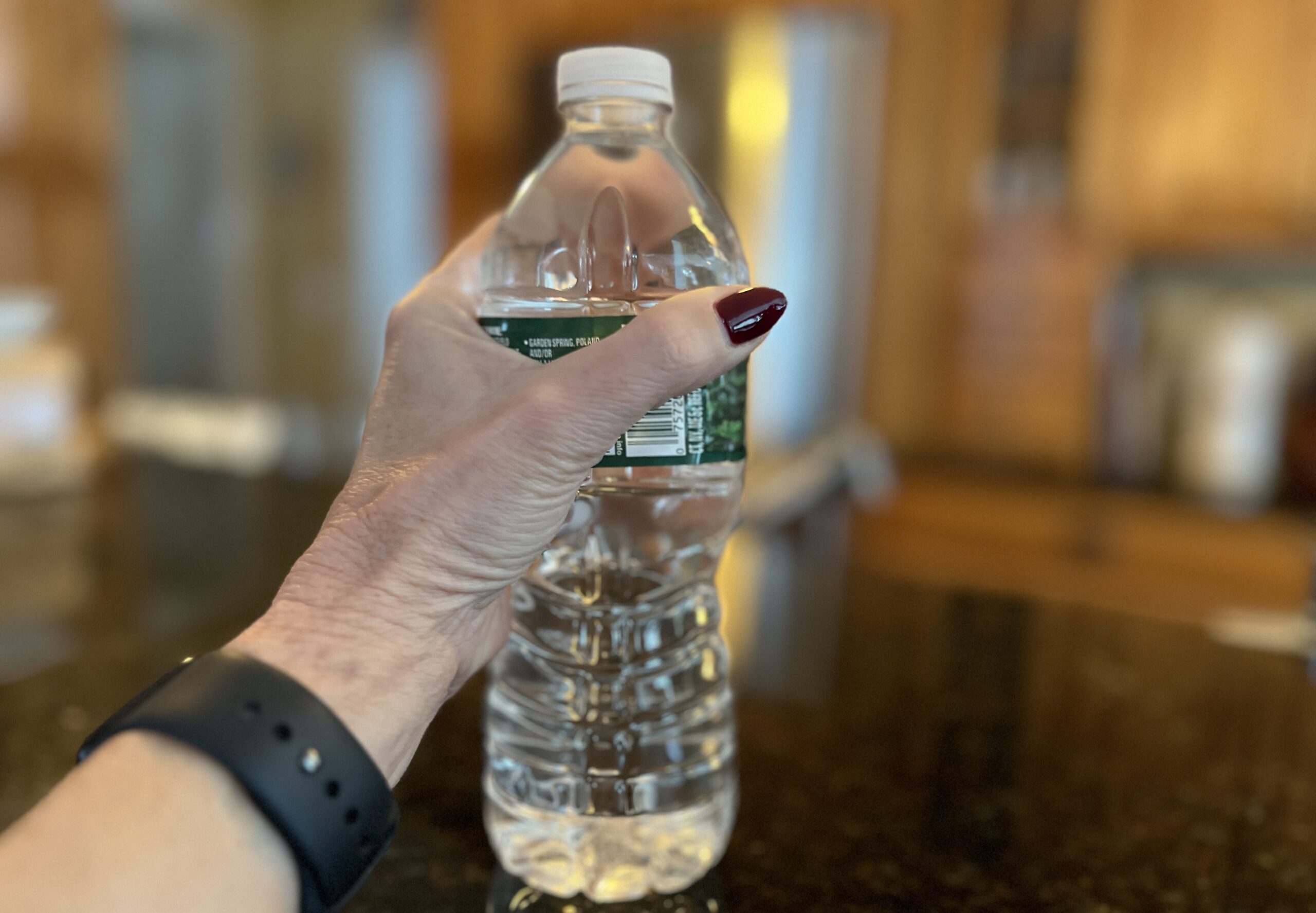Consumer Diary: Nanoplastics in Bottled Water

Audio By Carbonatix

Plastic water bottles have been shown to contain nanoplastics. Photo credit: Ronni Newton
Consumer columnist and West Hartford resident Harlan Levy has more than 20 years of experience writing stories about everyday experiences that anyone could encounter.

Harlan Levy. Courtesy photo
By Harlan Levy
Some of you readers may recall the iconic scene in the 1967 movie “The Graduate,” during actor Dustin Hoffman’s college graduation party when his parents’ friend tells him: “I just want to say one word to you … just one word … Are you listening? Plastics.”
Plastics, then the future, is now the present. But not in the way the man expected.
Recently I heard about a research report finding hundreds of thousands of bits of microscopic nanoplastics per liter of water in three unidentified popular brands of bottled water, and I blanched. Every day I drink a 16-ounce bottle of coconut-flavored vitamin water. Should I stop?
I read the stunning nanoplastics report – published earlier this month by Columbia University researchers in the journal Proceedings of the National Academy of Sciences – stating that the number of these microscopic particles, a fraction of the size of a speck of dust, was 10 to 100 times greater than previously estimated. They total from 100,000 to 250,000 in each liter of bottled water, the researchers now estimated, along with thousands of the bigger microplastics.
The tiny particles previously invisible under conventional imaging actually dominate in number and account for about 90% of the entire population of plastic particles detected, the researchers found. The remaining 10% were identified as microplastics.
I don’t know how many pieces of plastic were originally estimated, but 10 to100 times as much is too much for me!
Microplastics have been ingested daily in human foods, drinks, and product packaging, the report went on. But measuring how much we take in and the effects of the tiny nanoplastics had been challenging if not impossible, the report said, until the Columbia researchers developed a breakthrough to advance the effort – a complicated high-tech breakthrough method I won’t bother explaining.
“In drinking water production, plastic contamination is confirmed in every step from the well to the bottle,” the report said, matter-of-factly and terrifyingly. “A possible explanation is that some particles are newly released from the bottle package during transportation or storage, which are retained faithfully in the water sample.” Faithfully? What an adverb!
Other plastics “which are not the packaging material but also identified with significant numbers, are most likely introduced before or during water production,” the researchers said. “[Some] which share the same broad distribution of sizes, are widely used as equipment components or coagulant aids in water treatment.”
The report also cited one source as “the most popular membrane material used in reverse osmosis which is a common water purification method shared by all three brands.”
The researchers also described a contamination source even earlier in the process: the most abundant plastic already present in raw water, all of which “has profound implications for toxicological concerns.”
Regarding those concerns I found an article published late last year in Frontiers magazine that said, “[With] an exponential increase of global plastic production and use, micro- and nanoplastics in the environment will continue to rise, and the pollution problems will become increasingly prominent. Micro-and nanoplastics have been verified to be present in many aquatic organisms, mammal and human bodies, for example, in the human’s lung tissue, placenta, colon and stool. However, their potential adverse effects on human health remain unclear, and the related research is still in its infancy.”
“Oy vey!” my grandmother might have exclaimed.
Still, why wait?
What to do: Drink filtered tap water. But make sure your filter is not made out of plastic.
Or buy bottled water in glass or ceramic containers.
It’s sad that I’ll stop ordering cases of Hint Coconut Vitamin Water. Sad that I’ll be back drinking filtered Connecticut tap water, with its flat metallic taste. But you cannot deny knowledge.
>Meanwhile, stay tuned for further studies of the effects of this insidious invasion.
Cheers!
Like what you see here? Click here to subscribe to We-Ha’s newsletter so you’ll always be in the know about what’s happening in West Hartford! Click the blue button below to become a supporter of We-Ha.com and our efforts to continue producing quality journalism.




Scary knowledge, but at least we now know the problem exists and maybe will choose to do something about it (assuming something effective can indeed be done). Thank you Mr. Levy!